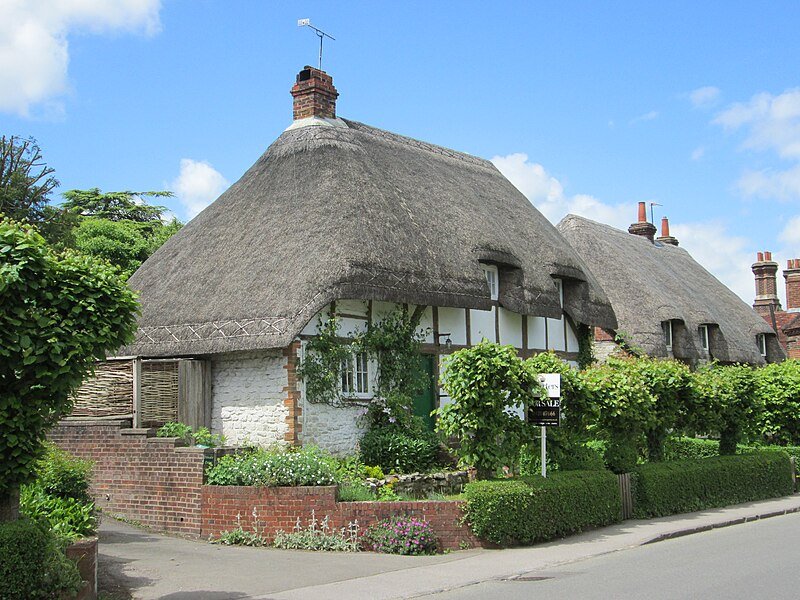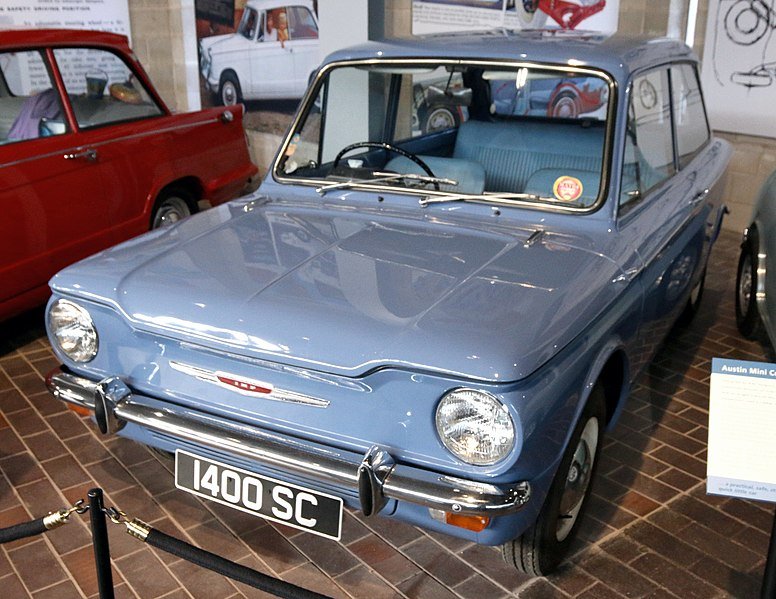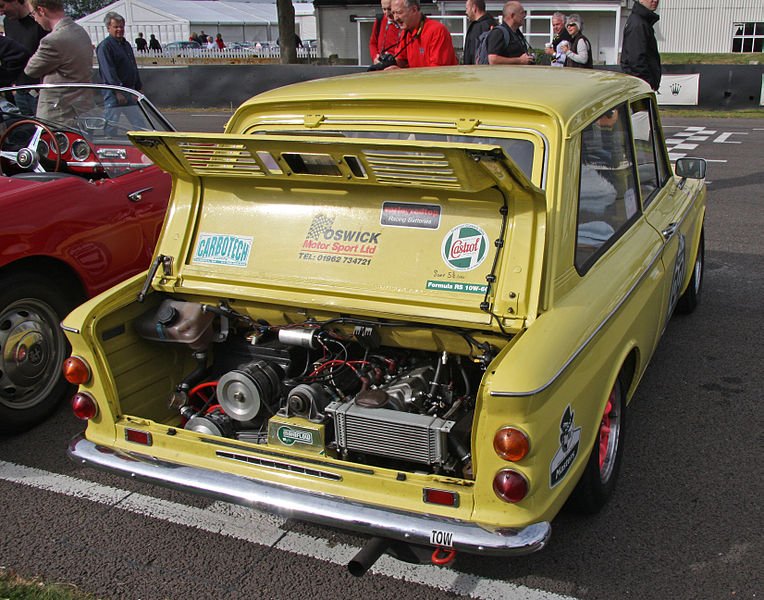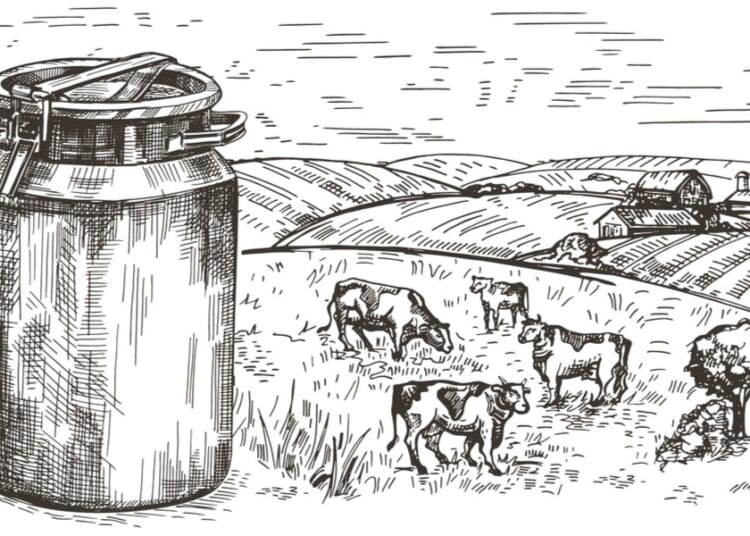THERE can’t be a more recognisable symbol of the British countryside than a thatched roof. Like this:

There are estimated to be 60,000 thatched roofs in the UK, mainly in England (which has the most in the world), though there are a few in all the home nations.
The history of thatching goes back to the Bronze Age and reached its zenith in the 18th century as a good way of using the stalks of cereal crops, which used to grow up to 6ft. Reeds were also used. However during the post-war destruction of traditional Britain, far worse than anything the Luftwaffe achieved (at least they didn’t drop Arndale Centres on us) many thatched properties were demolished. At the same time cereal crops were developed with much shorter stems. It looked like curtains for thatched roofs. However there has been a renaissance and now as many as 900 people are busily thatching.
Here is one of many videos on YouTube about the craft.
From being an economical roofing material for the rural working class, a thatched roof is now a luxury. However when I looked into prices they were not quite as fearsome as I expected. According to the Checkatrade website, you could expect to pay about £50,000 for a replacement roof (and about the same for a new one should you decide to get rid of your slates), depending on the size and how fancy you want it to be. The work takes about four weeks if the rain holds off. It should also be checked once a year in case small repairs are needed. If it is looked after it should last up to 40 years, though the ridge may need replacing between times. You also need to consider insurance which is likely to be three times as high as for a standard construction. (As a junior reporter I went to a thatched cottage fire – it was ferocious.) However if your house is also listed, as 75 per cent of the thatched properties in England are, premiums may well be even higher.
Thatchers can add a ‘finial’, an ornament on the roof ridge, often a fox or a pheasant. According to country lore, these ward off evil spirits. Nowadays they are usually made of straw on a wire netting frame. You can see lots of examples here.
***
I had to laugh when a friend sent me this news item. Wirral council, Merseyside, spent £20million on a sea wall to protect shops and properties on the prom at West Kirby from flooding. On Tuesday a storm sent waves crashing over the wall, but the floodwater remained trapped on the road when the tide went out. Staff at a café had to be rescued by lifeboat. You can see a TV report here.
The best bit is the quote from a Green party councillor: ‘The wall isn’t there primarily to stop water. Its purpose is to remove energy from the waves.’
Incidentally the project cost double the estimate. Remember, these are the people making decisions that affect our lives. Sigh.
***
Equine of the Week

THESE handsome animals are Exmoor ponies. Their distinctive ‘faded’ colouring is known as ‘mealy’ or pangaré. (I can’t find out if this is the origin of the expression ‘mealy-mouthed’ – I think it must be – does anyone know?)
The breed is exclusive to Exmoor, which straddles west Somerset and north Devon, and is quite separate from the Dartmoor type. It is descended from the wild horses which roamed Britain hundreds of thousands of years ago. The Celts tamed the ponies to pull their chariots, and the first written record of them is in the Domesday Book of 1086. Numbers reached 1,000 at times. In 1880 Exmoor, which had been a royal hunting ground, was sold. Thirty ponies were kept by Sir Thomas Acland, the estate’s warden who was now surplus to requirements, and farmers from Withypool and Hawkridge bought stock at the dispersal sale. These formed the basis of the present population.
The ponies nearly died out during the Second World War. Many were stolen for slaughter and I regret to report that troops used some for target practice. No more than 50 survived, but thanks to some dedicated breeders there are now about 500 in 20 herds, though the breed is still on the highest priority list of the Rare Breeds Survival Trust. There are breeding herds in other countries to preserve the gene pool should a disaster befall Exmoor, such as a disease.
Nearly all the ponies are owned by farmers, though there are a few near-feral ones. Every autumn, the ponies are ‘gathered’ or taken off the moor to their home farms. This allows owners to decide which foals are to be retained and which will go on to new homes, and to cull any adults which would not survive the harsh Exmoor winter.
Quite a number of Exmoor ponies are to be found in other parts of the country where they aid conservation projects. One such is on top of the White Cliffs of Dover, and you can read about it here.
Here is a video of a herd at home on Exmoor.
Here are some at work in Essex.
I presume this video was taken on Exmoor, when a misguided stag tried to show off to his harem.
And here is a delightful foal at 18 hours old.
You can read more at the Exmoor Pony Society website.
***
Wheels of the Week
THE Hillman Imp is the car that is credited with bringing down the Rootes motor manufacturing and dealing empire which was founded by William Rootes in 1913. Its brands included Humber, Commer, Hillman, Karrier, Singer, Sunbeam and Talbot.
The Imp was launched in 1963 as a response to the BMC Mini. This is the first car off the production line, now at the National Motor Museum at Beaulieu.


It was the first mass-produced British car with a rear engine.

With an 875cc capacity, it had a top speed of 76mph and cost £532.
The following is a condensed version of the car’s history from the Imp Club website, which I acknowledge with thanks.
‘The Imp was a massive and expensive leap of faith for Rootes. The company did not have any recent experience building small cars, even though it started off as a car builder by offering the then small Hillman Minx in 1931.
‘For the Imp, Rootes pioneered the use of an aluminium engine in a mass production car. However this process proved to be rather more complicated than simply substituting a well-known and trusted cast iron design with a new aluminium design. Rootes had to build a new computerised assembly plant on the outskirts of Glasgow, in the town of Linwood, in which to assemble the Imp, since planning regulations banned it from further expanding its Ryton plant near Coventry. Government grant money was offered to bring jobs (approx 6,000) to this unemployment blackspot, which had suffered many redundancies in the declining shipbuilding industry on the banks of the river Clyde. The investment also included an advanced die-casting plant to manufacture the aluminium engine casings, and a stake in a brand new Pressed Steel Company motor pressings works which manufactured all the new car’s body panels. One of the many problems was that Linwood was over 300 miles away from Ryton, and the engine castings made in Linwood [had] to be sent to Ryton to be machined and assembled, and then sent back up to be put on the cars – a 600-mile round trip.
‘The Glaswegian workforce, who were mainly recruited from the shipbuilding industry, were not versed in the intricacies of motor vehicle assembly, and Imp build quality and reliability suffered accordingly. Industrial disputes and strike action were commonplace. In 1964 there were 31 stoppages and only a third of the plant capacity was realised – 50,000 rather than 150,000.
‘The daring design of the Imp was underdeveloped, due in part to the government timetable to start production. Mechanical and cooling system problems were commonplace in the early cars.
‘The initial problems damaged the Imp’s reputation and popularity tailed off, with half of all production being from the first three years. It still sold thanks to its competitive price, distinctive styling and cheap running costs, but sales never lived up to expectations for what had become a very competent small car.
‘It was overshadowed in popularity by the Mini. Although the Mini initially sold poorly, by the mid 60s it was the “in” thing to have, whereas the Imp never enjoyed such status as a fashion statement.
‘The huge investment in both the Imp and the Linwood production plant proved to be one of the reasons for the undoing of Rootes Group, and its commercial failure fuelled the huge losses suffered although the main reason for Rootes Group losses were industrial unrest and the effects of the forthcoming cooperation with Chrysler Corporation of the USA. By 1967 the company had been acquired by Chrysler, to become part of Chrysler Europe. Chrysler stewardship was blamed by some for the demise of the Imp in March 1976, after fewer than 500,000 had been built, and the entire empire collapsed two years later, when it became part of Peugeot. The Linwood plant was closed in 1981.’
If you would like an Imp, there are not many about but here is a renovation project on the market for £3,750.











